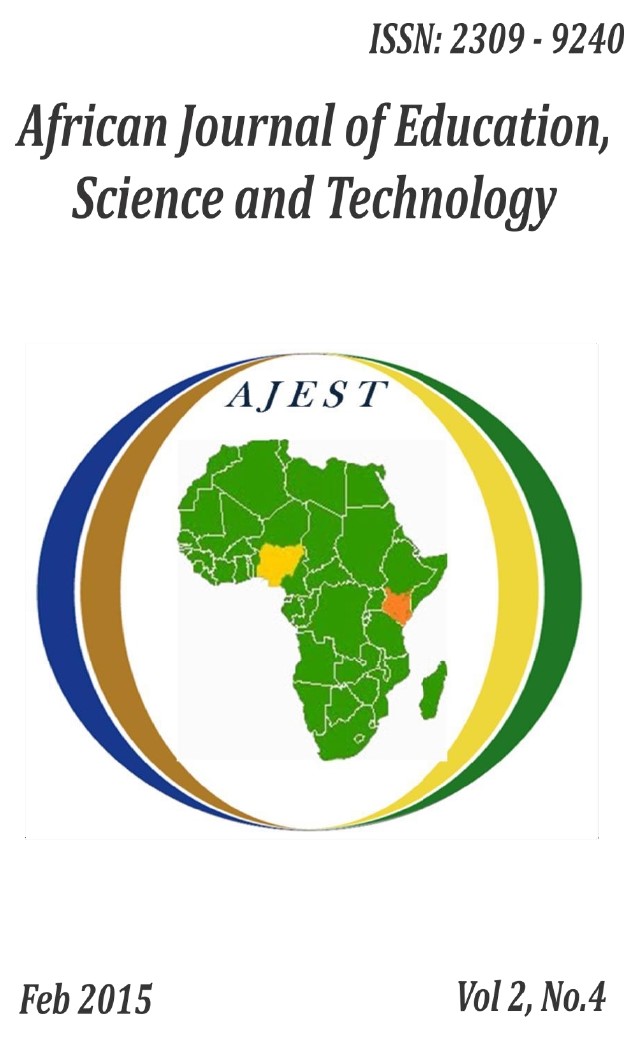Changes in Vegetation Cover and the Feeding Preferences of African Elephants in Rimoi Game Reserve, Kenya
##article.abstract##
Tree cover is decreasing in several African savannas due to high elephant pressure. Outside protected areas the situation is even worse due to anthropogenic activities. Reduction in tree cover could have serious consequences if trees have positive effects on herbivore food quality and availability. In East Africa woodlands have been changed to open grasslands in areas with elephants due to selective suppression of the regeneration of desirable species. This threatens the productivity of these ecosystems thereby affecting biological diversity. This study was conducted in Rimoi Game Reserve, Elgeyo Marakwet County, Kenya in 2010. Landsat images were downloaded from the global land cover facility using path 169 and row 060. The down loaded image was projected using coordinates WGS 84 Zone 36 N. the bands used were 2, 3 and 4 because vegetation reflects better in NIR band. These bands were clipped to study area shape file and false colour composite which were prepared using bands 2, 3 and 4. To enhance detail legibility during classification, the area was classified using Anderson classification scheme based on three classes: Trees, woodlands and shrubs. This was done in Arc GIS
9.3 and processed using Erdas imagine 9.2, so as to get classified maps, NDVI and change maps. Results showed that there was moderately strong change between 1986 and 2000 (Cramer‘s V= 0.328) indicating relationship between change in 1986 and 2000 (Kappa = 0.065). The change between 2000 and 2006 was also strong (Cramer‘s V = 0.358), indicating that the relationship between change in 2000 and 2006 was strong (Kappa = -0.187). The change between 1986 and 2006 was very strong (Cramer‘s V = 0.400), indicating that there was a strong agreement in association between changes during this period (Kappa = -0.15561).
References
Echardt, H.C., Van Wilgen, B.M., & Biggs, H.C. (2000). Trends in woody vegetation cover in the Kruger National Park, South Africa, between 1940 and 1998. Afr. J. Ecol. 38, 108-115.
Higgins, S. I., Bond, W. J. & Trollope, W. S. W. (2000). Fire, resprouting and variability: a recipe for grass– tree coexistence in savanna. Journal of Ecology 88, 213–229
Jachmann, H., & Croes, T. (1991). Effects of Browsing by elephant on the Combretum/Terminalia woodland at the Nazinga Game Ranch, Burkina Faso, West Africa. Biological Conservation 57, 13 – 24.
Kituyi, E., Marufu, L., Huber, B., Wandiga, S.O., Jumba, I.O., & Andreae, M.O. (2001). Biofuel availability and domestic use patterns in Kenya. Biomass Bioenerg, 20, 71–82.
Kothmonn, M. M., Richardo, M., & Rodrguez, I. (1997). Structure and causes of vegetation change in state and transition model application, J. of Range Management 50(4), 399-408
Luoga, E. J., Witkowski, E.T.F., & Balkwill. (2004). Land Use and Cover Changes in Relation to Institutional Frame work and Tenure of Land and Resources in Eastern Tanzania Miombo
Woodlands. Environment, Development and Sustainability. Kluwer Academic Publishers, Netherlands, pp. 1-23
Mwalyosi, R.B.B (1990). The dynamic ecology of Acacia tortilis woodland in lake Manyara National Park, Tanzania. African Journal of Ecology 28, 189-199.
O‘Connor, T.G., Goodman, P.S., & Clegg, B. (2007). A functional hypothesis of the threat of local extirpation of woody plant species by elephant in Africa. Biol. Conserv. 136, 329-345.
Raubenheimer, D., & Simpson, S.J. (1998). Nutrient transfer functions: the site of integration between feeding behaviour and nutritional physiology. Chemoecology, 8, 61–68.
Weyerhaeuser, F. J. (1995). Survey of elephant damage to baobabs in Tanzania‘s Lake Manyara National Park.
African Journal of Ecology 23, 235-243


